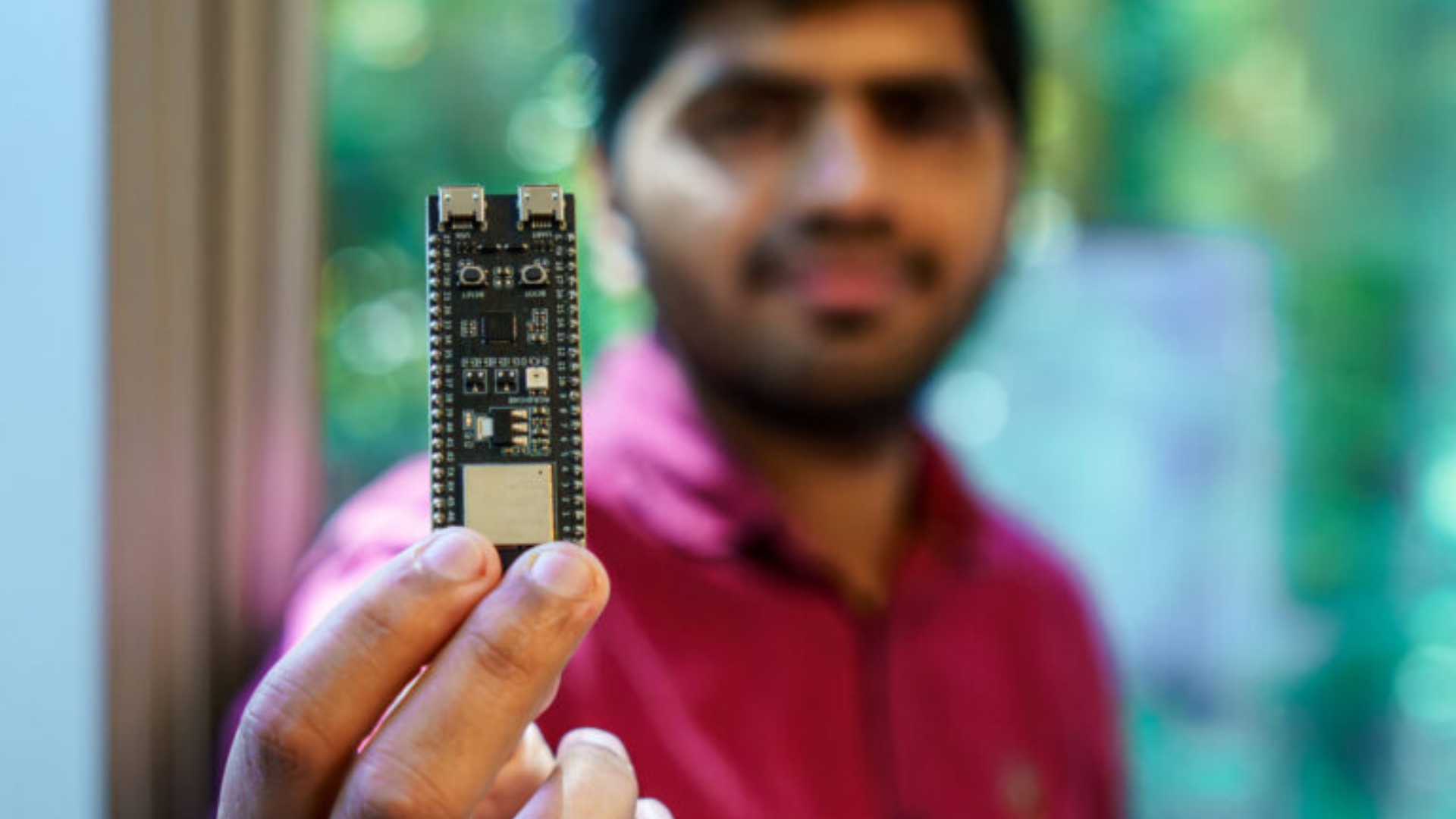Wi-Fi signals used to measure heart rate accurately — signal variations caused by a beating heart enable determining beats per minute
Can this be turned into a heartbeat sensor à la 'Call of Duty?'

A university research team developed a novel technique to measure heart rates using Wi-Fi. According to the University of California, Santa Clara (UCSC), the team, which included Computer Science and Engineering Professor Katia Obraczka, Ph.D. student Nayan Bhatia, and high school student and visiting researcher Pranay Kocheta, used a low-cost ESP32 chip and paired it with a machine learning algorithm to detect changes in the Wi-Fi signal caused by the heart. They then run it through a machine learning algorithm, which can estimate the heart rate with an accuracy of around half a beat per minute after five seconds of monitoring (with the margin of error improving after longer observation and with the use of more powerful Wi-Fi devices).
This project, called Pulse-Fi, works as far as 10 feet away from the hardware, meaning you don’t have to wear it to get accurate readings. “What we found was that because of the machine learning model, that distance apart basically had no effect on performance, which was a very big struggle for past models,” said Pranay Kocheta. “The other thing was position — all the different things you encounter in day-to-day life, we wanted to make sure we were robust to however a person is living.”
More importantly, this wireless heart rate tracking is quite affordable, with the system built by the researchers costing between $5 and $10. More expensive Raspberry Pi chips, which cost around $30, are more accurate, but still cheap enough to mass produce. These numbers are close to the price of pulse oximeters, which are what most medical professionals use to monitor heart rate and oxygen saturation.
However, these must have skin contact and are typically worn on the finger. Pulse-Fi works remotely, allowing you to monitor patients remotely.
Aside from counting your heart’s beat per minute, the team behind Pulse-Fi is also working to develop the system for measuring breathing rate. This can be useful for detecting conditions like sleep apnea, which is often done with a portable monitor that the patient must wear. If the team can prove that Pulse-Fi can do it wirelessly and accurately, this will make detection and diagnosis easier and much more comfortable.
Follow Tom's Hardware on Google News, or add us as a preferred source, to get our up-to-date news, analysis, and reviews in your feeds. Make sure to click the Follow button!
Get Tom's Hardware's best news and in-depth reviews, straight to your inbox.

Jowi Morales is a tech enthusiast with years of experience working in the industry. He’s been writing with several tech publications since 2021, where he’s been interested in tech hardware and consumer electronics.
-
artk2219 Reply
I'm sure it will cost less than 50 dollars to produce, but it will be sold as a medical devices, so it will cost 5000 dollars or more to the customer. That said, with a decent enough sensor, it could map rooms and detect heartbeats, which would be mighty useful in an urban environment.Admin said:Can this be turned into a heartbeat sensor à la 'Call of Duty?'
Research team uses Wi-Fi to monitor heart rate accurately — relies on signal variations caused by beating heart to determine BPM : Read more -
Alvar "Miles" Udell I would say it's more like a Star Trek style bio-bed where all you need to do is lay on it and things like heart rate, blood oxygen, and other things that'd normally take a clamp or stick on device to measure are measured from a device over the patient.Reply -
USAFRet Reply
You mean like this medical device, that can be had for ~$100?artk2219 said:I'm sure it will cost less than 50 dollars to produce, but it will be sold as a medical devices, so it will cost 5000 dollars or more to the customer.
https://www.amazon.com/KardiaMobile-Personal-Device-Heart-Monitor/dp/B07RQW6SD5 -
MosephV Reply
Yeah. If this does get picked up, it won't be for "the betterment of people or society". It will just get added to the ever expanding suite of tools used to monitor and monetize everything about our livesartk2219 said:I'm sure it will cost less than 50 dollars to produce, but it will be sold as a medical devices, so it will cost 5000 dollars or more to the customer. That said, with a decent enough sensor, it could map rooms and detect heartbeats, which would be mighty useful in an urban environment. -
tamalero Reply
Depends on which side you look.Alvar Miles Udell said:I would say it's more like a Star Trek style bio-bed where all you need to do is lay on it and things like heart rate, blood oxygen, and other things that'd normally take a clamp or stick on device to measure are measured from a device over the patient.
It could end something along the lines of DeusEX, where it could be used to map the entire area of living targets, obstacles, etc.. for a corporate kill hit. -
Hooda Thunkett The team did this work at the University of California in Santa Cruz, not Santa Clara. Can the article be corrected?Reply -
JRStern Reply
No, of course that Kardia requires physical contact, and then claims to monitor not just the pulse but the complex shape of the pulse. Maybe they can get more of that by wifi but I gather not yet.USAFRet said:You mean like this medical device, that can be had for ~$100?
https://www.amazon.com/KardiaMobile-Personal-Device-Heart-Monitor/dp/B07RQW6SD5 -
USAFRet Reply
My comment was simply in response to the thought of "...but it will be sold as a medical devices, so it will cost 5000 dollars or more to the customer..."JRStern said:No, of course that Kardia requires physical contact, and then claims to monitor not just the pulse but the complex shape of the pulse. Maybe they can get more of that by wifi but I gather not yet.
That is not a universal thing, as seen by the $100 Kardia medical device. -
JRStern Nice. Gives us hope for non-contact or at least non-invasive measure of blood pressure and blood glucose.Reply
Doppler wifi maybe from the back of an iWatch. Many people trying, even some cheap toys you can buy now, that apparently do not perform acceptably for actual care.
Is AI analysis for signal processing really the new factor here? Remarkable if true.